
Acta of Bioengineering and Biomechanics
Scope & Guideline
Advancing knowledge at the intersection of biology and engineering.
Introduction
Aims and Scopes
- Biomechanical Analysis and Modeling:
The journal publishes research that employs biomechanical modeling and analysis techniques to understand human movement, injury mechanisms, and rehabilitation strategies. This includes finite element analyses, computational simulations, and experimental biomechanics. - Material Engineering for Biomedical Applications:
A significant focus is placed on the development and characterization of biomaterials, such as biodegradable polymers and composites, that can be used in medical devices and implants. Research often investigates the mechanical properties and biocompatibility of these materials. - Rehabilitation Technologies:
The journal emphasizes advancements in rehabilitation technologies, including robotic devices, virtual reality applications, and wearable sensors, aimed at improving patient outcomes in rehabilitation settings. - Clinical Biomechanics and Motion Analysis:
Research articles often explore clinical applications of biomechanics, including assessment and intervention techniques for various musculoskeletal disorders, sports injuries, and postoperative rehabilitation. - Interdisciplinary Approaches:
The journal encourages interdisciplinary research that combines principles from engineering, biology, medicine, and sports science to address complex biomechanical challenges.
Trending and Emerging
- Robotics and Rehabilitation Engineering:
There is a notable increase in research related to robotics for rehabilitation, including the development of exoskeletons and robotic devices that assist with physical therapy and recovery. - 3D Printing and Custom Biomaterials:
Emerging themes include the use of 3D printing technology in creating customized biomaterials and implants, reflecting a trend toward personalized medicine and patient-specific solutions. - Virtual Reality and Augmented Reality in Therapy:
The integration of virtual and augmented reality technologies into therapeutic practices is gaining momentum, particularly in rehabilitation settings, emphasizing innovative approaches to patient engagement and recovery. - Wearable Technology and Monitoring Systems:
Research focusing on wearables for real-time monitoring of biomechanics during physical activity is on the rise. This trend highlights the importance of data-driven approaches in sports science and rehabilitation. - Injury Prevention and Performance Optimization:
There is an increasing emphasis on studies aimed at understanding injury prevention mechanisms and optimizing athletic performance through biomechanical analysis, reflecting a growing interest in sports biomechanics.
Declining or Waning
- Traditional Surgical Techniques:
The emphasis on traditional surgical techniques has been decreasing, as there is a growing interest in minimally invasive and robotic-assisted procedures that leverage advanced technology for better outcomes. - Basic Biomechanical Studies without Clinical Relevance:
There appears to be a waning interest in purely theoretical or basic biomechanical studies that do not translate into clinical applications, as the journal increasingly favors research with direct implications for patient care. - General Biomechanical Assessments:
Research focused on general assessments of biomechanics without specific applications or interventions is becoming less frequent, indicating a shift towards more targeted and innovative methodologies.
Similar Journals
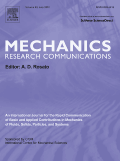
MECHANICS RESEARCH COMMUNICATIONS
Advancing the Frontiers of Mechanics and MaterialsMECHANICS RESEARCH COMMUNICATIONS, published by PERGAMON-ELSEVIER SCIENCE LTD, is a prestigious journal in the fields of Civil and Structural Engineering, Condensed Matter Physics, Materials Science, and Mechanical Engineering. With an ISSN of 0093-6413 and E-ISSN of 1873-3972, it has made significant contributions to the understanding and advancement of mechanics and materials since its inception in 1974. The journal is well-regarded in academia, holding a Q2 ranking across multiple categories as of 2023, and ranking in the 65th percentile for Mechanical Engineering. Researchers and professionals benefit from its peer-reviewed content, which includes a wide range of articles from fundamental research to applied technological developments. Although currently not an open access journal, it remains a vital resource for those focused on innovating within the engineering and materials science domains. With its established legacy, MECHANICS RESEARCH COMMUNICATIONS continues to shape the discourse in mechanics and engineering, making it essential reading for students and practitioners alike.

Journal of Theoretical and Applied Mechanics
Championing Open Access to Mechanical InsightsJournal of Theoretical and Applied Mechanics, published by the Polish Society of Theoretical and Applied Mechanics, stands as a leading platform for disseminating cutting-edge research in the realms of theoretical and applied mechanics. With its ISSN 1429-2955 and E-ISSN 1429-2955, this Open Access journal has been fostering academic dialogue since 2006, making knowledge readily accessible to researchers and practitioners alike. Based in Warsaw, Poland, the journal encompasses a wide breadth of topics within mechanics, appealing to a diverse readership including researchers, professionals, and students. The journal's current Scopus ranking places it within the 30th percentile of the field, emphasizing its relevance and contribution to the discipline. As it converges from 2007 to 2024, the Journal of Theoretical and Applied Mechanics is pivotal for those seeking to advance understanding and innovation in mechanical engineering and mathematics, making it an essential resource for anyone involved in these critical areas of study.

Prosthesis
Fostering collaboration to enhance patient outcomes.Prosthesis is an esteemed open-access journal published by MDPI, dedicated to advancing the fields of biomedical engineering, materials science, oral surgery, and rehabilitation. Since its inception in 2019, the journal has been pivotal in disseminating high-quality research that addresses contemporary challenges in prosthetic development, design, and application. With an impressive categorization in the Q2 quartile across multiple disciplines, including a Rank of #12 in Dentistry & Oral Surgery and #26 in Medicine & Rehabilitation, Prosthesis is a vital resource for researchers, practitioners, and students aiming to enhance their knowledge and impact in these rapidly evolving fields. The journal's commitment to open access ensures that its wide array of articles, studies, and reviews are freely available to the global academic community, promoting collaboration and innovation. Based in Switzerland, at ST ALBAN-ANLAGE 66, CH-4052 BASEL, Prosthesis not only fosters scholarly exchange but also aims to contribute significantly to the improvement of patient outcomes through cutting-edge research and technological advancements.
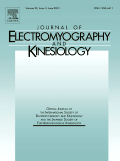
JOURNAL OF ELECTROMYOGRAPHY AND KINESIOLOGY
Advancing the Science of Movement and MuscleThe Journal of Electromyography and Kinesiology, published by Elsevier, is a distinguished academic platform that focuses on the intricate interrelations between electromyography, kinetic analysis, and their applications in health and sports sciences. Established in 1991, this journal has maintained a rigorous publication standard and continues to be pivotal in advancing knowledge in biophysics, neurology, and sports science, with impressive Q1 and Q2 ratings in multiple categories as of 2023. With an impact factor that underscores its significance in the scientific community, the journal contributes to a deeper understanding of muscle function and movement patterns, making it an essential resource for researchers, healthcare professionals, and students alike. While it operates under a subscription model, the insights provided by the journal are invaluable for anyone invested in the fields of biomechanics, rehabilitation, and neuromuscular research. For over three decades, this journal has become a cornerstone for disseminating groundbreaking research and fostering collaboration among scholars in the ever-evolving landscape of kinesiology and electromyography.

Biomedical Engineering Online
Connecting global researchers to transformative medical technologies.Biomedical Engineering Online, published by BMC, is an esteemed open-access journal in the United Kingdom that has been advancing the field of biomedical engineering since its inception in 2002. With a commitment to disseminating high-quality research, the journal encompasses a broad scope, including innovative studies in biomaterials, imaging technologies, and medical applications. Recognized within the Q2 quartile for various categories such as Biomaterials and Biomedical Engineering, it ranks favorably among its peers: Rank #58 out of 333 in Radiology, and Rank #15 out of 63 in Radiological and Ultrasound Technology in the Scopus database. These rankings, coupled with an open-access model, ensure that critical advancements in medical technology are accessible to researchers, health professionals, and students globally. As it continues through its converged years from 2002 to 2024, Biomedical Engineering Online remains an invaluable resource for anyone involved in the cutting-edge intersection of engineering and medicine.
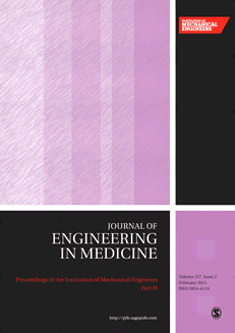
PROCEEDINGS OF THE INSTITUTION OF MECHANICAL ENGINEERS PART H-JOURNAL OF ENGINEERING IN MEDICINE
Driving Progress: Engineering Innovations in Health and MedicineProceedings of the Institution of Mechanical Engineers Part H - Journal of Engineering in Medicine is a pivotal publication in the interdisciplinary realm of mechanical engineering and medical technology. Published by SAGE Publications Ltd, this esteemed journal delivers cutting-edge research and innovative solutions that bridge the gap between engineering principles and medical applications. With an impressive reputation, the journal is ranked in the Q2 category for Mechanical Engineering and Q3 for miscellaneous Medicine in 2023, reflecting its significant contribution to the field. Boasting an impact factor that positions it favorably in both mechanical engineering and medical research, it serves as a critical platform for researchers, professionals, and students eager to advance their knowledge and influence the future of engineering in healthcare. This journal encompasses diverse topics, driving forward the synergy between engineering and medicine while promoting discussions and discoveries that shape industry practices globally.

Applied Bionics and Biomechanics
Transforming Ideas into Practical Applications in BionicsApplied Bionics and Biomechanics, published by HINDAWI LTD, is a leading open-access journal dedicated to the interdisciplinary integration of biological and engineering principles, particularly within the realms of bioengineering, biomedical engineering, and biotechnology. With an ISSN of 1176-2322 and E-ISSN of 1754-2103, the journal operates out of the United Kingdom since its inception in 2003, providing a vital platform for the dissemination of innovative research and practical applications that enhance our understanding of biomechanical systems. Although the journal's coverage was discontinued in Scopus after 2023, it remains a valuable resource for researchers, professionals, and students, highlighted by its Q3 ranking across multiple categories, underlining its respectable position within the academic community. The journal encourages open sharing of ideas, fostering collaboration among diverse scientific fields, with the objective of addressing complex challenges in the interface of biology and engineering.
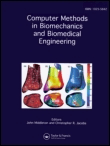
COMPUTER METHODS IN BIOMECHANICS AND BIOMEDICAL ENGINEERING
Advancing the Frontiers of Biomechanics and Biomedical EngineeringCOMPUTER METHODS IN BIOMECHANICS AND BIOMEDICAL ENGINEERING, published by TAYLOR & FRANCIS LTD, is a leading journal dedicated to the interdisciplinary field of biomechanics and biomedical engineering. With an ISSN of 1025-5842 and an E-ISSN of 1476-8259, this journal has been a significant resource since its inception in 1997 and will continue to publish cutting-edge research until 2024. The journal holds a respectable position in the academic community, categorized in Q3 of multiple domains including Bioengineering, Biomedical Engineering, and Human-Computer Interaction, reflecting its relevance across diverse fields. Although the journal does not offer open access, it provides valuable insights and methodologies essential for researchers, professionals, and students engaged in advancing computational techniques and their application in medicine and engineering. With Scopus rankings highlighting its growing influence, particularly in the Biomedical Engineering and Human-Computer Interaction sectors, this journal plays a crucial role in fostering innovation and enhancing the understanding of biomechanical systems through computational methods.

JOURNAL OF MOTOR BEHAVIOR
Enhancing Knowledge Across the Spectrum of Motor ScienceJOURNAL OF MOTOR BEHAVIOR, published by Routledge Journals, Taylor & Francis Ltd, is a leading platform that explores critical insights into the dynamics of motor functions and behavior across various disciplines including biophysics, cognitive neuroscience, and sports science. With an ISSN of 0022-2895 and an E-ISSN of 1940-1027, this journal has been a vital resource since its inception in 1969, offering a comprehensive analysis of motor control, skill acquisition, and the neural mechanisms underlying motor performance. Positioned in the Q3 quartile across multiple categories for 2023, it ranks competitively within its fields, such as #136 in Orthopedics & Sports Medicine and #95 in Experimental & Cognitive Psychology. JOURNAL OF MOTOR BEHAVIOR serves not only as an essential reference for researchers and professionals but also as an invaluable resource for students pursuing studies in motor behavior and related areas, reflecting the ongoing evolution and significance of this field in enhancing our understanding of human movement and performance.
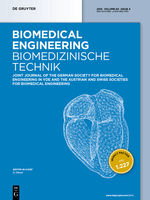
Biomedical Engineering-Biomedizinische Technik
Transforming Healthcare Through Cutting-edge ResearchBiomedical Engineering-Biomedizinische Technik, published by WALTER DE GRUYTER GMBH, serves as a pivotal platform for advancing knowledge in the field of biomedical engineering and medicine since its inception in 1956. With an ISSN of 0013-5585 and an E-ISSN of 1862-278X, this peer-reviewed journal offers accessible insights into innovative research and technological advancements that are reshaping healthcare practices and biomedical applications. Although rated in the Q3 category for both Biomedical Engineering and Miscellaneous Medicine in 2023, the journal's impact factor and growing reputation demonstrate its vital role in fostering academic dialogue and collaboration. The journal is based in Germany, while its scope encompasses a diverse range of topics, thus bridging the gap between engineering and medical disciplines. Researchers, professionals, and students alike are encouraged to engage with the content that not only highlights contemporary challenges but also presents groundbreaking solutions in biomedical technology.